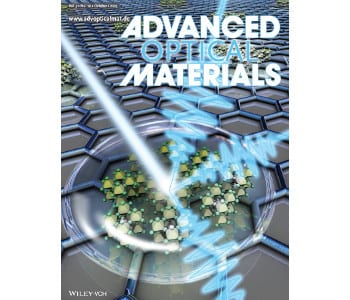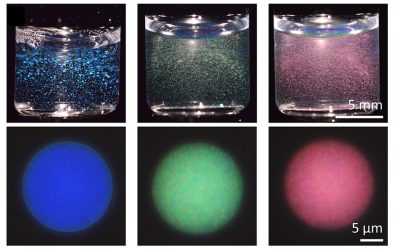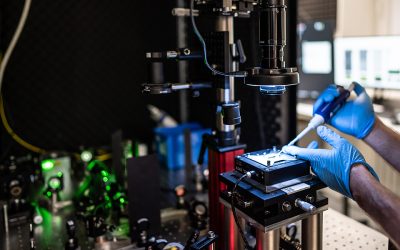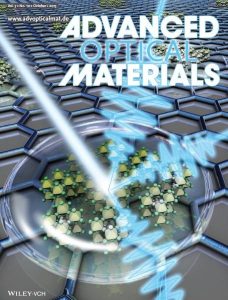 The latest issue of Advanced Optical Materials is now available. You can sign up to access all Advanced Optical Materials articles right here!
The latest issue of Advanced Optical Materials is now available. You can sign up to access all Advanced Optical Materials articles right here!
These articles were highlighted on the covers of the Advanced Optical Materials October issue:
Phototransistors
The front cover images shows a hybrid photodetector consisting of monolayer graphene covered with dispersive organolead halide perovskite islands is demonstrated by B. Sun, Y.-B. Cheng, Q. Bao, and co-workers. The photodetector is shown to have a photoconductive gain of ≈109 electrons per photon and a responsivity of ≈6.0×105 A W-1. Evidence is provided for charge transfer and photogating. Unlike previous reports on perovskite bulk thin films, these islands have a low recombination rate. The device also shows photodetection across a broad range from 250 to 700 nm.
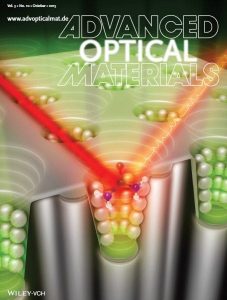 Colorimetry
Colorimetry
The inside cover depicts how, unlike traditional extraordinary transmission (EOT) devices, a nano Lycurgus cup array (nanoLCA) contains a hybrid configuration of a periodic quasi-3D nanostructure array and dense sidewall metal nanoparticles within each nanostructure, enabling visible colorimetric sensing and SERS chemical identification on the same device. M. R. Gartia, X. Liu, G. L. Liu, and co-workers calculate the SERS enhancement of nanoLCA for a liquid sample as 2.8×107, which is the highest among all reported EOT-based SERS devices, with potential in point-of-care (POC) applications.
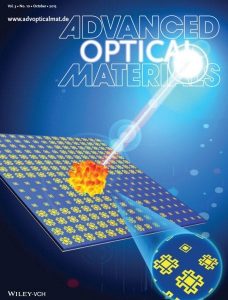 Metasurfaces
Metasurfaces
A single-layered metasurface is proposed by Q. Cheng, T. J. Cui, and co-workers to realize broadband diffusion at terahertz frequencies based on the destructive interference from a number of sub-wavelength elements. As illustrated on the back cover, two kinds of elements are used to achieve full phase range and a linear phase response. The scattered waves can be efficiently manipulated to disperse into nearly all directions, resulting in extremely low back-scattering. The metasurface shows excellent angular independence toward incident waves across a broad spectrum.

